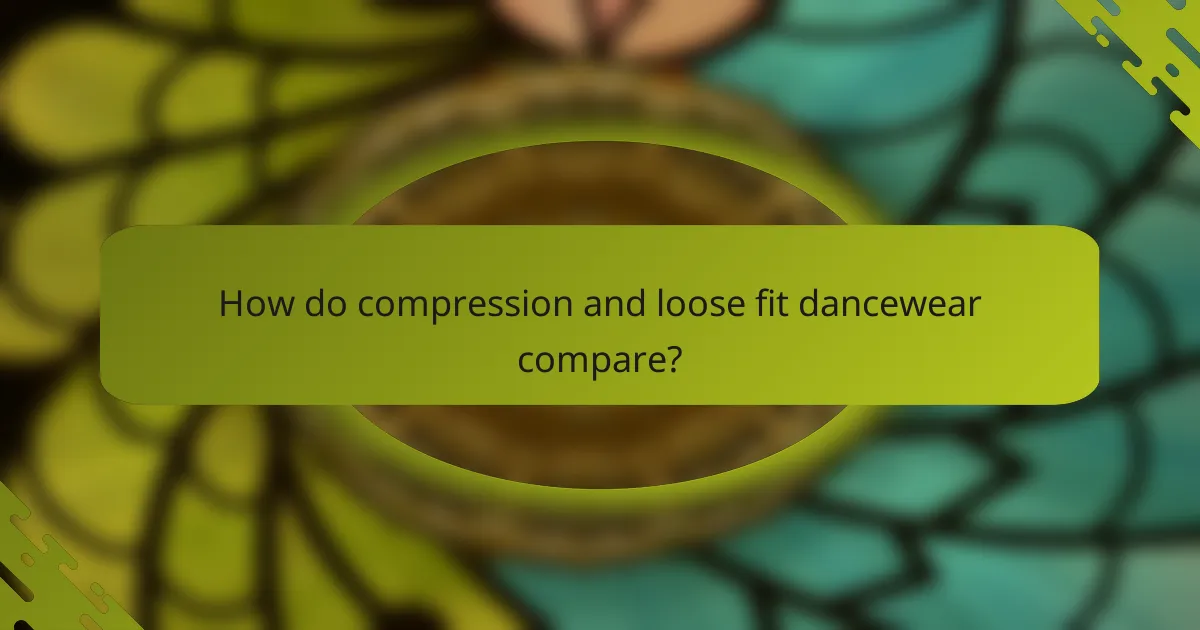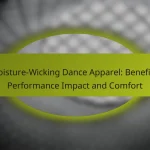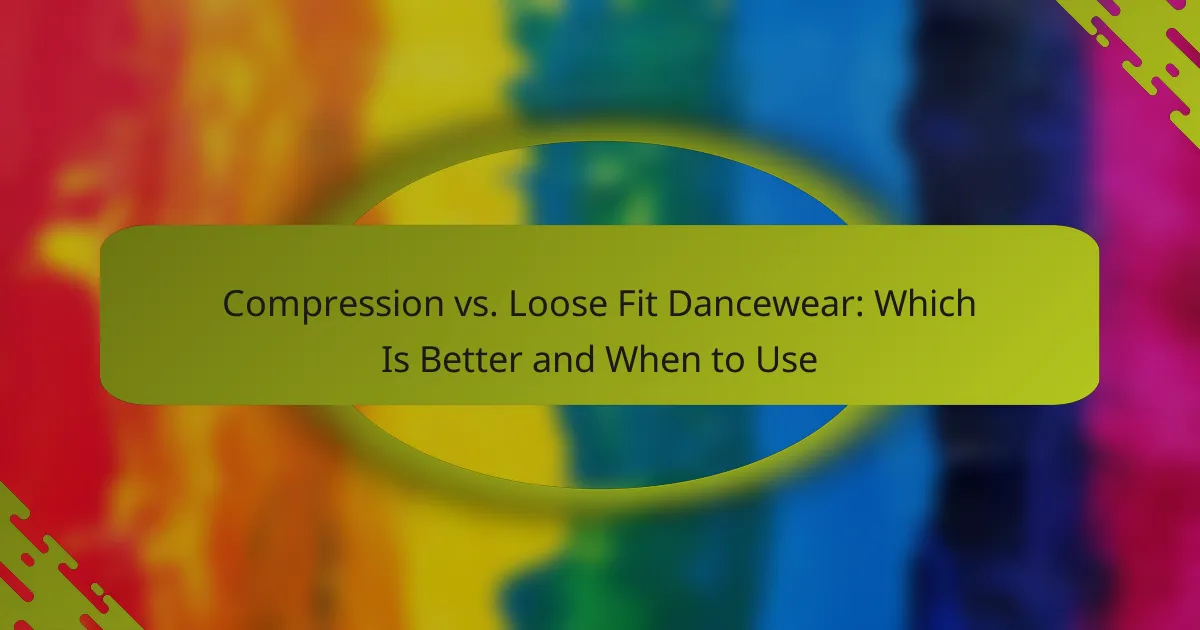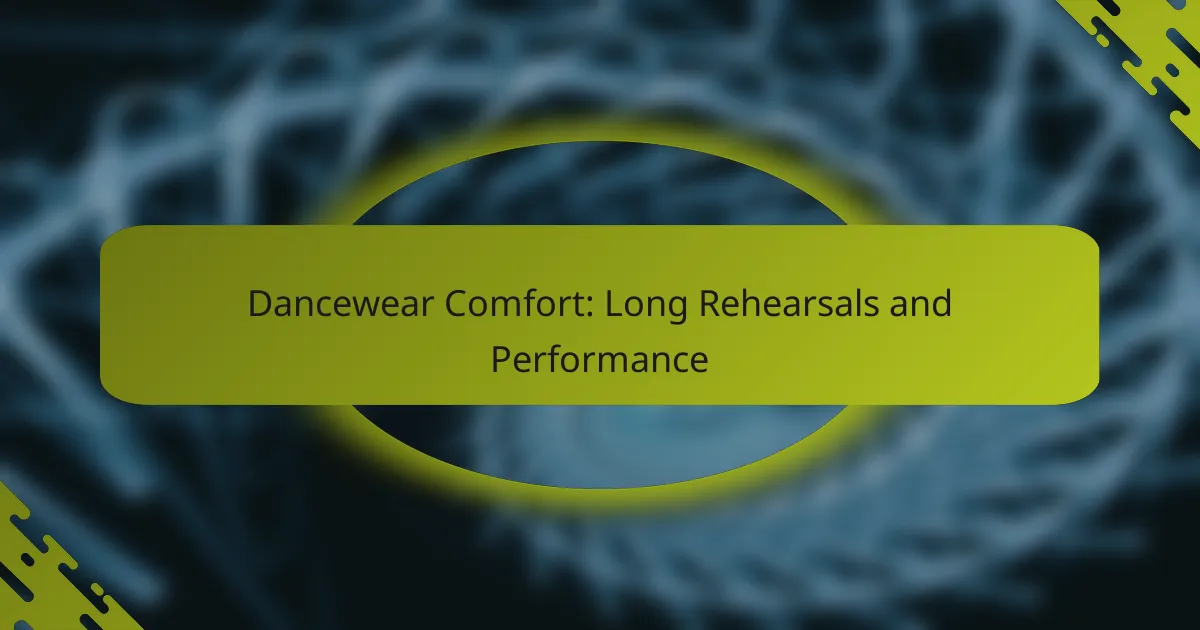When choosing between compression and loose fit dancewear, it’s essential to consider the specific needs of your dance style and personal comfort. Compression dancewear offers muscle support and stability for intense sessions, while loose fit options prioritize comfort and freedom of movement. Understanding the benefits of each can help you select the right attire for optimal performance and enjoyment.

When should I choose compression dancewear?
Choose compression dancewear when you need enhanced support and stability during intense dance sessions. This type of clothing is designed to fit snugly against the body, providing benefits like muscle support and improved circulation.
Enhanced muscle support
Compression dancewear offers enhanced muscle support by applying pressure to key muscle groups, which can help reduce muscle vibration during movement. This support can lead to decreased muscle fatigue and soreness, allowing dancers to perform at their best for longer periods.
When selecting compression garments, look for options that target the specific areas you use most in your dance style, such as legs or core. A snug fit is essential, but ensure it allows for full range of motion without restriction.
Improved blood circulation
One of the primary benefits of compression dancewear is improved blood circulation. The tight fit promotes better blood flow, which can enhance oxygen delivery to muscles and aid in recovery after strenuous activity.
To maximize these benefits, choose compression wear made from breathable materials that wick moisture away. This will help maintain comfort and performance during high-energy routines, especially in warmer environments.
Optimal for high-intensity dance
Compression dancewear is optimal for high-intensity dance styles, such as hip-hop, jazz, or contemporary, where dynamic movements are frequent. The supportive nature of these garments can help dancers maintain stability and control, reducing the risk of injury.
Consider using compression wear during rehearsals and performances for added confidence. However, be mindful of personal comfort; if the fit feels too tight or restrictive, it may hinder performance rather than enhance it.

What are the benefits of loose fit dancewear?
Loose fit dancewear offers several advantages, including enhanced comfort and freedom of movement. This type of clothing is particularly suitable for various dance styles and levels, making it a popular choice among dancers.
Increased airflow and comfort
Loose fit dancewear allows for better airflow, which helps regulate body temperature during practice or performances. This increased ventilation can lead to a more comfortable experience, especially in warmer environments or during intense sessions.
Additionally, the relaxed fit reduces the risk of chafing and irritation, which can be common with tighter clothing. Dancers often find that loose garments provide a more enjoyable experience, allowing them to focus on their movements rather than discomfort.
Greater range of motion
Loose fit dancewear promotes a greater range of motion, enabling dancers to execute movements with ease. The lack of constriction allows for fluidity in choreography, making it easier to perform complex steps and transitions.
This flexibility is particularly beneficial in styles that require expansive movements, such as contemporary or jazz dance. Dancers can stretch and bend without the limitations imposed by tighter clothing, enhancing their overall performance.
Ideal for casual or beginner dancers
Loose fit dancewear is an excellent choice for casual or beginner dancers who may prioritize comfort over style. New dancers often benefit from the forgiving nature of these garments, which can help reduce self-consciousness while learning new techniques.
Moreover, loose fit options are versatile and can be worn in various settings, from dance classes to casual outings. This practicality makes them a go-to choice for those just starting their dance journey.

How do compression and loose fit dancewear compare?
Compression dancewear provides a snug fit that supports muscles and enhances performance, while loose fit dancewear offers freedom of movement and comfort. The choice between the two depends on the type of dance, personal preference, and the desired level of support.
Material differences
Compression dancewear is typically made from high-stretch, moisture-wicking fabrics like spandex or nylon blends that provide support and improve blood circulation. In contrast, loose fit dancewear often uses lighter materials such as cotton or rayon, which prioritize breathability and comfort over compression.
When selecting materials, consider the climate and type of dance. For instance, breathable fabrics are ideal for warm environments or styles that involve a lot of movement, while compression materials may be more suitable for high-intensity dance forms.
Fit and style variations
Compression dancewear is designed to fit tightly against the body, often featuring leggings, bodysuits, or fitted tops that enhance muscle definition. Loose fit dancewear, on the other hand, includes styles like oversized tees, wide-leg pants, and flowy skirts that allow for greater mobility and comfort.
Your choice of fit should align with the dance style. For example, ballet dancers may prefer compression wear for support, while hip-hop dancers might opt for loose styles for better freedom of movement.
Price range comparisons
Compression dancewear generally falls within a mid to high price range, often costing between $30 to $100 or more, depending on the brand and technology used. Loose fit dancewear tends to be more affordable, with prices usually ranging from $20 to $70.
When budgeting, consider the longevity and performance benefits of compression wear versus the casual comfort of loose fit options. Investing in quality compression pieces can enhance performance, while loose fit styles may be better for casual practice or leisure wear.

What factors should I consider when choosing dancewear?
When selecting dancewear, consider the dance style, your body type, personal preferences, and the climate. Each factor influences comfort, performance, and overall enjoyment during practice or performance.
Dance style and intensity
The type of dance you practice significantly affects your choice of dancewear. For high-intensity styles like hip-hop or jazz, compression garments can provide support and enhance performance by reducing muscle fatigue. In contrast, styles such as ballet may benefit from looser fits that allow for greater freedom of movement.
Additionally, consider the specific demands of your routine. For instance, if your choreography includes a lot of jumps or turns, opt for tighter-fitting options that stay in place, while slower-paced styles may allow for more relaxed clothing.
Body type and personal preference
Your body type plays a crucial role in determining the best fit for your dancewear. Compression styles may be preferred by those seeking support and a streamlined silhouette, while others may favor loose-fitting attire for comfort and ease of movement. Understanding your body’s needs can help you select the most flattering and functional options.
Personal preference is equally important. Some dancers feel more confident in form-fitting clothing, while others may feel restricted. Experimenting with different styles can help you find what makes you feel most comfortable and expressive while dancing.
Climate and season
The climate and season can greatly influence your dancewear choices. In warmer months, lightweight and breathable fabrics are essential to keep you cool during practice. Loose-fitting garments can help with airflow, while moisture-wicking compression wear can also be effective for staying dry.
In colder conditions, layering becomes important. Consider wearing compression layers underneath looser outer garments to maintain warmth without sacrificing mobility. Always choose fabrics that provide adequate insulation while allowing for flexibility in your movements.

What are popular brands for compression dancewear?
Popular brands for compression dancewear include Under Armour, Nike, and Adidas, each offering unique features tailored for dancers. These brands focus on providing support, flexibility, and moisture-wicking properties to enhance performance and comfort during dance routines.
Under Armour
Under Armour is known for its innovative fabric technology, which includes moisture-wicking and quick-drying materials. Their compression dancewear is designed to fit snugly, providing muscle support and reducing fatigue during intense dance sessions.
Consider Under Armour’s HeatGear line, which is ideal for warmer conditions, while their ColdGear options are suitable for cooler environments. This versatility makes them a popular choice among dancers who perform in varying climates.
Nike
Nike offers a range of compression dancewear that combines style with functionality. Their Dri-FIT technology helps keep dancers dry and comfortable by wicking away sweat, making it a reliable option for both practice and performances.
When choosing Nike compression wear, look for items with flat seams to minimize chafing and irritation. Their designs often feature bold colors and patterns, appealing to dancers who want to express their individuality while maintaining performance standards.
Adidas
Adidas is recognized for its high-quality compression dancewear that emphasizes comfort and support. Their Climalite fabric technology effectively manages moisture, ensuring that dancers stay dry and focused during their routines.
Adidas also offers a variety of styles and fits, allowing dancers to select pieces that suit their body type and personal preferences. Pay attention to their sizing guides to ensure the best fit, as proper compression is key to maximizing performance benefits.

What are popular brands for loose fit dancewear?
Popular brands for loose fit dancewear include Capezio, Bloch, and Sansha. These brands are known for their comfortable and stylish options that cater to various dance styles, making them favorites among dancers.
Capezio
Capezio offers a wide range of loose fit dancewear, including pants, tops, and skirts designed for comfort and flexibility. Their products often feature breathable fabrics that allow for easy movement, making them ideal for both practice and performances.
Bloch
Bloch is another leading brand known for its high-quality loose fit dancewear. Their collection includes relaxed-fit leggings and oversized tees that provide a stylish yet functional look for dancers. Many of their items are made from moisture-wicking materials, enhancing comfort during intense sessions.
Sansha
Sansha specializes in dancewear that combines fashion with functionality. Their loose fit options, such as wide-leg pants and flowy tops, are popular for their unique designs and comfort. This brand often incorporates lightweight fabrics that are perfect for layering or wearing alone in various dance environments.










